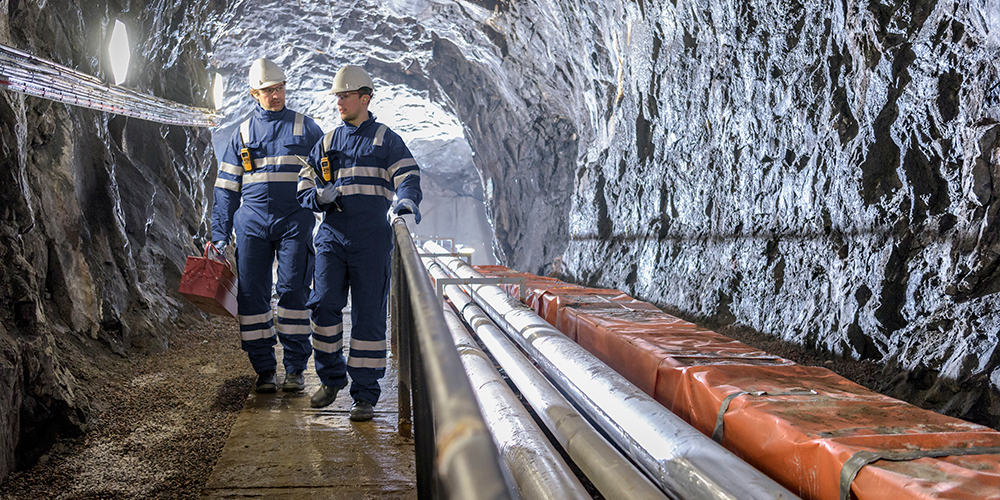
Harsh operating environments for both workers and machinery are one of the key challenges in the mining industry. There are still many incidents where casualties happen due to explosions, cave-ins and equipment related accidents. Workers are also facing regular risks due to the toxic operating conditions. To overcome these occupational hazards while maximizing worker safety and efficiency, mining companies are investing in developing smart appliances and systems that harness the power of the Internet-of-Things (IoT).
“Connected Mine” is a well-established industrial concept that enables mining companies to infuse IoT within their operations by performing smart data analytics on connected devices at the edge. Worker safety and efficiency procedures such as collision monitoring, remote digging, worker mobility, and augmented reality simulations heavily depend on real-time analysis of a massive amount of telemetry data. This data is generated by thousands of IoT devices and analysed using artificial intelligence to aid in real-time decision making at a mining site. While the public cloud can provide the extensive compute power required for such advanced solutions, connectivity to the surface above and integrating solution components under challenging environmental conditions have always been a barrier for further advancements.
This is where hybrid cloud solutions such as Microsoft Azure Stack come into play. As an extension of Microsoft Azure, Azure Stack provides many of the same Azure Services while operating in edge and disconnected sites. It can address latency and connectivity requirements by processing data locally in Azure Stack and then aggregating it in Azure for further analytics, with common application logic across both platforms. The following example is based on the Azure Stack AI at the Edge architecture published by Microsoft. It explains how we can deploy a trained AI model and integrate with local applications running in Azure Stack to provide low-latency intelligence.

In this example, an AI model is trained using Azure Machine Learning Service and a Big Data cluster in Microsoft Azure. Next, it is packaged as a containerized application and deployed into an Azure Container Registry. The trained model can then be deployed to a Kubernetes cluster running on Azure Stack. After that, it is integrated with an Azure IoT Hub which receives telemetry data from Azure IoT Edge-enabled devices and the data is scored against the deployed model. The local application places any insights and anomalies from scoring into a queue, for sending to Azure Storage using an Azure Function. The solution in Azure will leverage the data from edge scoring to improve the model while retaining the globally-relevant and compliant insights in the global web application.
However, this leads to the question of how to address the challenges described earlier with isolated and harsh operating conditions such as mining sites. An ideal solution would be to leverage the Dell EMC Tactical Azure Stack, a ruggedized and field-deployable product for Azure Stack tactical edge environments. It can provide an Azure consistent cloud to any operating environment with:
- Limited or no network connectivity
- Fully mobile, or high portability (“2-person lift”) requirements
- Harsh conditions, including those requiring military specifications solutions
- High security requirements, with optional connectivity to Azure Government and Azure Government Secret
In our previous post, we discussed how Dell EMC’s Tactical Azure Stack offering can complement your hybrid cloud strategy with our unique features such as automated patch and update capabilities, PowerEdge hardware management, and integration with Isilon, CloudLink, and Pivotal Cloud Foundry. Today we are pleased to announce that the Dell EMC Tactical Azure Stack will be generally available in the United States, Canada, Australia, and New Zealand from March 22nd onwards. For more information follow Dell EMC Cloud for Microsoft Azure Stack and contact your Dell EMC account representative.
